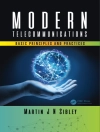Starting from the fundamentals, the present book describes methods of designing analog electronic filters and illustrates these methods by providing numerical and circuit simulation programs. The subject matters comprise many concepts and techniques that are not available in other text books on the market. To name a few – principle of transposition and its application in directly realizing current mode filters from well known voltage mode filters; an insight into the technological aspect of integrated circuit components used to implement an integrated circuit filter; a careful blending of basic theory, numerical verification (using MATLAB) and illustration of the actual circuit behaviour using circuit simulation program (SPICE); illustration of few design cases using CMOS and Bi CMOS technological processes.
Jadual kandungan
Preface XV
Abbreviations XIX
1 Introduction 1
2 A Review of Network Analysis Techniques 7
2.1 Transformed Impedances 7
2.2 Nodal Analysis 9
2.3 Loop (Mesh) Analysis 9
2.4 Network Functions 11
2.5 One-Port and Two-Port Networks 12
2.5.1 One-Port Networks 12
2.5.2 Two-Port Networks 13
2.5.2.1 Admittance Matrix Parameters 13
2.5.2.2 Impedance Matrix Parameters 14
2.5.2.3 Chain Parameters (Transmission Parameters) 14
2.5.2.4 Interrelationships 15
2.5.2.5 Three-Terminal Two-Port Network 16
2.5.2.6 Equivalent Networks 16
2.5.2.7 Some Commonly Used Nonreciprocal Two-Ports 16
2.6 Indefinite Admittance Matrix 18
2.6.1 Network Functions of a Multiterminal Network 20
2.7 Analysis of Constrained Networks 24
2.8 Active Building Blocks for Implementing Analog Filters 28
2.8.1 Operational Amplifier 28
2.8.2 Operational Transconductance Amplifier 30
2.8.3 Current Conveyor 31
Practice Problems 33
3 Network Theorems and Approximation of Filter Functions 41
3.1 Impedance Scaling 41
3.2 Impedance Transformation 42
3.3 Dual and Inverse Networks 44
3.3.1 Dual and Inverse One-Port Networks 44
3.3.2 Dual Two-Port Networks 45
3.4 Reversed Networks 47
3.5 Transposed Network 48
3.6 Applications to Terminated Networks 50
3.7 Frequency Scaling 52
3.8 Types of Filters 52
3.9 Magnitude Approximation 54
3.9.1 Maximally Flat Magnitude (MFM) Approximation 55
3.9.1.1 MFM Filter Transfer Function 56
3.9.2 Chebyshev (CHEB) Magnitude Approximation 60
3.9.2.1 CHEB Filter Transfer Function 63
3.9.3 Elliptic (ELLIP) Magnitude Approximation 65
3.9.4 Inverse-Chebyshev (ICHEB) Magnitude Approximation 68
3.10 Frequency Transformations 69
3.10.1 LP to HP Transformation 69
3.10.2 LP to BP Transformation 71
3.10.3 LP to BR Transformation 73
3.11 Phase Approximation 73
3.11.1 Phase Characteristics of a Transfer Function 74
3.11.2 The Case of Ideal Transmission 74
3.11.3 Constant Delay (Linear Phase) Approximation 75
3.11.4 Graphical Method to Determine the BT Filter Function 76
3.12 Delay Equalizers 77
Practice Problems 78
4 Basics of Passive Filter Design 83
4.1 Singly Terminated Networks 83
4.2 Some Properties of Reactance Functions 85
4.3 Singly Terminated Ladder Filters 88
4.4 Doubly Terminated LC Ladder Realization 92
Practice Problems 100
5 Second-Order Active-RC Filters 103
5.1 Some Basic Building Blocks using an OA 104
5.2 Standard Biquadratic Filters or Biquads 104
5.3 Realization of Single-Amplifier Biquadratic Filters 109
5.4 Positive Gain SAB Filters (Sallen and Key Structures) 111
5.4.1 Low-Pass SAB Filter 111
5.4.2 RC:CR Transformation 113
5.4.3 High-Pass Filter 115
5.4.4 Band-Pass Filter 115
5.5 Infinite-Gain Multiple Feedback SAB Filters 115
5.6 Infinite-Gain Multiple Voltage Amplifier Biquad Filters 117
5.6.1 KHN State-Variable Filter 119
5.6.2 Tow–Thomas Biquad 121
5.6.3 Fleischer–Tow Universal Biquad Structure 123
5.7 Sensitivity 124
5.7.1 Basic Definition and Related Expressions 124
5.7.2 Comparative Results for ωp and Qp Sensitivities 126
5.7.3 A Low-Sensitivity Multi-OA Biquad with Small Spread in Element Values 126
5.7.4 Sensitivity Analysis Using Network Simulation Tools 129
5.8 Effect of Frequency-Dependent Gain of the OA on the Filter Performance 130
5.8.1 Cases of Inverting, Noninverting, and Integrating Amplifiers Using an OA with Frequency-Dependent Gain 130
5.8.1.1 Inverting Amplifier 130
5.8.1.2 Noninverting Amplifier 131
5.8.1.3 Inverting Integrating Amplifier 132
5.8.2 Case of Tow–Thomas Biquad Realized with OA Having Frequency-Dependent Gain 132
5.9 Second-Order Filter Realization Using Operational Transconductance Amplifier (OTA) 135
5.9.1 Realization of a Filter Using OTAs 138
5.9.2 An OTA-C Band-Pass Filter 138
5.9.3 A General Biquadratic Filter Structure 139
5.10 Technological Implementation Considerations 140
5.10.1 Resistances in IC Technology 141
5.10.1.1 Diffused Resistor 141
5.10.1.2 Pinched Resistor 142
5.10.1.3 Epitaxial and Ion-Implanted Resistors 142
5.10.1.4 Active Resistors 143
5.10.2 Capacitors in IC Technology 144
5.10.2.1 Junction Capacitors 145
5.10.2.2 MOS Capacitors 145
5.10.2.3 Polysilicon Capacitor 146
5.10.3 Inductors 146
5.10.4 Active Building Blocks 147
5.10.4.1 Operational Amplifier (OA) 147
5.10.4.2 Operational Transconductance Amplifier (OTA) 148
5.10.4.3 Transconductance Amplifiers (TCAs) 150
5.10.4.4 Current Conveyor (CC) 151
Practice Problems 152
6 Switched-Capacitor Filters 161
6.1 Switched C and R Equivalence 162
6.2 Discrete-Time and Frequency Domain Characterization 163
6.2.1 SC Integrators: s ↔ z Transformations 164
6.2.2 Frequency Domain Characteristics of Sampled-Data Transfer Function 167
6.3 Bilinear s ↔ z Transformation 169
6.4 Parasitic-Insensitive Structures 173
6.4.1 Parasitic-Insensitive-SC Integrators 176
6.4.1.1 Lossless Integrators 176
6.4.1.2 Lossy Integrators 177
6.5 Analysis of SC Networks Using PI-SC Integrators 177
6.5.1 Lossless and Lossy Integrators 177
6.5.1.1 Inverting Lossless Integrator 177
6.5.1.2 Noninverting Lossless Integrator 179
6.5.1.3 Inverting and Noninverting Lossless Integration Combined 179
6.5.1.4 Lossy PI-SC Integrator 181
6.5.2 Application of the Analysis Technique to a PI-SC Integrator-Based Second-Order Filter 181
6.5.3 Signals Switched to the Input of the OA during Both Phases of the Clock Signal 183
6.6 Analysis of SC Networks Using Network Simulation Tools 184
6.6.1 Use of VCVS and Transmission Line for Simulating an SC Filter 184
6.7 Design of SC Biquadratic Filters 187
6.7.1 Fleischer–Laker Biquad 188
6.7.2 Dynamic Range Equalization Technique 191
6.8 Modular Approach toward Implementation of Second-Order Filters 191
6.9 SC Filter Realization Using Unity-Gain Amplifiers 199
6.9.1 Delay-and-add Blocks Using UGA 200
6.9.2 Delay Network Using UGA 201
6.9.3 Second-Order Transfer Function Using DA1, DA2 and D Networks 202
6.9.4 UGA-Based Filter with Reduced Number of Capacitances 202
Practice Problems 204
7 Higher-Order Active Filters 207
7.1 Component Simulation Technique 207
7.1.1 Inductance Simulation Using Positive Impedance Inverters or Gyrators 208
7.1.2 Inductance Simulation Using a Generalized Immittance Converter 210
7.1.2.1 Sensitivity Considerations 213
7.1.3 FDNR or Super-Capacitor in Higher-Order Filter Realization 213
7.1.3.1 Sensitivity Considerations 216
7.2 Operational Simulation Technique for High-Order Active RC Filters 217
7.2.1 Operational Simulation of All-Pole Filters 217
7.2.2 Leapfrog Low-Pass Filters 219
7.2.3 Systematic Steps for Designing Low-Pass Leapfrog Filters 220
7.2.4 Leapfrog Band-Pass Filters 222
7.2.5 Operational Simulation of a General Ladder Structure 223
7.3 Cascade Technique for High-Order Active Filter Implementation 225
7.3.1 Sensitivity Considerations 227
7.3.2 Sequencing of the Biquads 228
7.3.3 Dynamic Range Considerations 228
7.4 Multiloop Feedback (and Feed-Forward) System 229
7.4.1 Follow the Leader Feedback Structure 229
7.4.1.1 Ti = (1/s), a Lossless Integrator 230
7.4.1.2 Ti = 1/(s+ ∝), a Lossy Integrator 231
7.4.2 FLF Structure with Feed-Forward Paths 233
7.4.3 Shifted Companion Feedback Structure 234
7.4.4 Primary Resonator Block Structure 237
7.5 High-Order Filters Using Operational Transconductance Amplifiers 239
7.5.1 Cascade of OTA-Based Filters 239
7.5.2 Inductance Simulation 239
7.5.3 Operational Simulation Technique 239
7.5.4 Leapfrog Structure for a General Ladder 242
7.6 High-Order Filters Using Switched-Capacitor (SC) Networks 245
7.6.1 Parasitic-Insensitive Toggle-Switched-Capacitor (TSC) Integrator 245
7.6.2 A Stray-Insensitive Bilinear SC Integrator Using Biphase Clock Signals 247
7.6.3 A Stray-Insensitive Bilinear Integrator with Sample-and-Hold Input Signal 247
7.6.4 Cascade of SC Filter Sections for High-Order Filter Realization 248
7.6.5 Ladder Filter Realization Using the SC Technique 250
Practice Problems 251
8 Current-Mode Filters 255
8.1 Basic Operations in Current-Mode 255
8.1.1 Multiplication of a Current Signal 255
8.1.1.1 Use of a Current Mirror 256
8.1.1.2 Use of a Current Conveyor 257
8.1.1.3 Use of Current Operational Amplifier 258
8.1.2 Current Addition (or Subtraction) 259
8.1.3 Integration and Differentiation of a Current Signal 259
8.2 Current Conveyors in Current-Mode Signal Processing 264
8.2.1 Some Basic Building Blocks Using CCII 264
8.2.2 Realization of Second-Order Current-Mode Filters 264
8.2.2.1 Universal Filter Implementation 264
8.2.2.2 All-Pass/Notch and Band-Pass Filters Using a Single CCII 265
8.2.2.3 Universal Biquadratic Filter Using Dual-Output CCII 266
8.3 Current-Mode Filters Derived from Voltage-Mode Structures 267
8.4 Transformation of a VM Circuit to a CM Circuit Using the Generalized Dual 269
8.5 Transformation of VM Circuits to CM Circuits Using Transposition 271
8.5.1 CM Circuits from VM Circuits Employing Single-Ended OAs 272
8.5.1.1 CM Biquads Derived from VM Biquads Employing Finite Gain Amplifiers 272
8.5.1.2 CM Biquads Derived from VM Biquads Employing Infinite-Gain Amplifiers 273
8.5.2 CM Circuits from VM Circuits Employing OTAs 274
8.5.2.1 VM Circuits Using Single-Ended OTAs 274
8.5.2.2 VM Circuits Using Differential-Input OTAs 277
8.6 Derivation of CTF Structures Employing Infinite-Gain Single-Ended OAs 279
8.6.1 Illustrative Examples 280
8.6.1.1 Single-Amplifier Second-Order Filter Network 280
8.6.1.2 Tow-Thomas Biquad 281
8.6.1.3 Ackerberg and Mossberg LP and BP Filters 282
8.6.2 Effect of Finite Gain and Bandwidth of the OA on the Pole Frequency, and Pole Q 283
8.7 Switched-Current Techniques 285
8.7.1 Add, Subtract, and Multiply Operations 286
8.7.2 Switched-Current Memory Cell 286
8.7.3 Switched-Current Delay Cell 288
8.7.4 Switched-Current Integrators 288
8.7.5 Universal Switched-Current Integrator 290
8.8 Switched-Current Filters 291
Practice Problems 294
9 Implementation of Analog Integrated Circuit Filters 299
9.1 Active Devices for Analog IC Filters 300
9.2 Passive Devices for IC Filters 300
9.2.1 Resistance 300
9.2.2 Switch 302
9.3 Preferred Architecture for IC Filters 303
9.3.1 OA-Based Filters with Differential Structure 303
9.3.1.1 First-Order Filter Transfer Functions 304
9.3.1.2 Second-Order Filter Transfer Functions 304
9.3.2 OTA-Based Filters with Differential Structures 310
9.3.2.1 First-Order Filter Transfer Functions 310
9.3.2.2 Second-Order Filter Transfer Functions 312
9.4 Examples of Integrated Circuit Filters 314
9.4.1 A Low-Voltage, Very Wideband OTA-C Filter in CMOS Technology 314
9.4.2 A Current-Mode Filter for Mobile Communication Application 318
9.4.2.1 Filter Synthesis 318
9.4.2.2 Basic Building Block 319
9.4.2.3 Inductance and Negative Resistance 321
9.4.2.4 Second-Order Elementary Band-Pass Filter Cell 321
Practice Problems 323
Appendices 325
Appendix A 327
A.1 Denominator Polynomial D(s) for the Butterworth Filter Function of Order n, with Passband from 0 to 1 rad s−1 327
A.2 Denominator Polynomial D(s) for the Chebyshev Filter Function of Order n, with Passband from 0 to 1 rad s−1 328
A.3 Denominator Polynomial D(s) for the Bessel Thomson Filter Function of Order n 328
A.4 Transfer Functions for Several Second-, Third-, and Fourth-Order Elliptic Filters 330
Appendix B 333
B.1 Bessel Thomson Filter Magnitude Error Calculations (MATLAB Program) 333
B.2 Bessel Thomson Filter Delay Error Calculations (MATLAB Program) 334
Appendix C 337
C.1 Element Values for All-Pole Single-Resistance-Terminated Low-Pass Lossless Ladder Filters 337
C.2 Element Values for All-Pole Double-Resistance-Terminated Low-Pass Lossless Ladder Filters 337
C.3 Element Values for Elliptic Double-Resistance-Terminated Low-Pass Lossless Ladder Filters 340
References 345
Index 351
Mengenai Pengarang
Rabindranath Raut obtained his M.Tech. degree in radiophysics and electronics from the University of Kolkata, India, in 1968, and his Ph.D. degree in electrical engineering from Concordia University, Montreal, Canada, in 1984. While in India, he worked as an electronics engineer (1968-1972) at the Indian Space Research Organization, and as a lecturer (1972-1978) in the Indian Institute of Technology. From 1983 to 1991, he worked as a senior radio-frequency electronic circuit and senior radio-frequency integrated circuit design engineer in various organizations in Canada. In 1991, Dr. Raut joined the faculty of the Electrical and Computer Engineering Department at Concordia University, where he still teaches. He has published numerous articles in various international journals and conference proceedings. He is a senior member of the IEEE (USA), and a licensed professional engineer in the provinces of Quebec (OIQ) and Ontario (PEO), Canada. Dr. Raut?s teaching and research interests lie in the areas of electronics and analog VLSI, with a specialization in analog filters and radio frequency circuits and systems.
M.N.S. Swamy received his Ph.D. degree in electrical engineering from the University of Saskatchewan, Canada, in 1963. He is presently a Research Professor and the Director of the Center for Signal Processing and Communications in the Department of Electrical and Computer Engineering at Concordia University, Montreal, Canada, where he served as the Founding Chair of the Department of Electrical Engineering from 1970 to 1977, and Dean of Engineering and Computer Science from 1977 to 1993. Since 2001, he has been holding the Concordia Research Chair in Signal Processing. Dr. Swamy has also taught in the Electrical Engineering Department of the Technical University of Nova Scotia, Halifax, and the University of Calgary, as well as in the Department of Mathematics at the University of Saskatchewan. He is the author or co-author of many articles and several books, and a Fellow of many societies including the IEEE , the IET (UK) and the EIC (Canada). He is the recipient of many awards including the IEEE-CAS Society education Medal, Golden Jubilee Medal, and the Guillemin-Cauer best paper award. He was the president of the CAS-Society in 2004 and Editor-in Chief of the IEEE transactions on Circuits and Systems during 1999-2001. Recently, he was awarded the title of Honorary Professor by the National Chiao Tung University, Taiwan.












